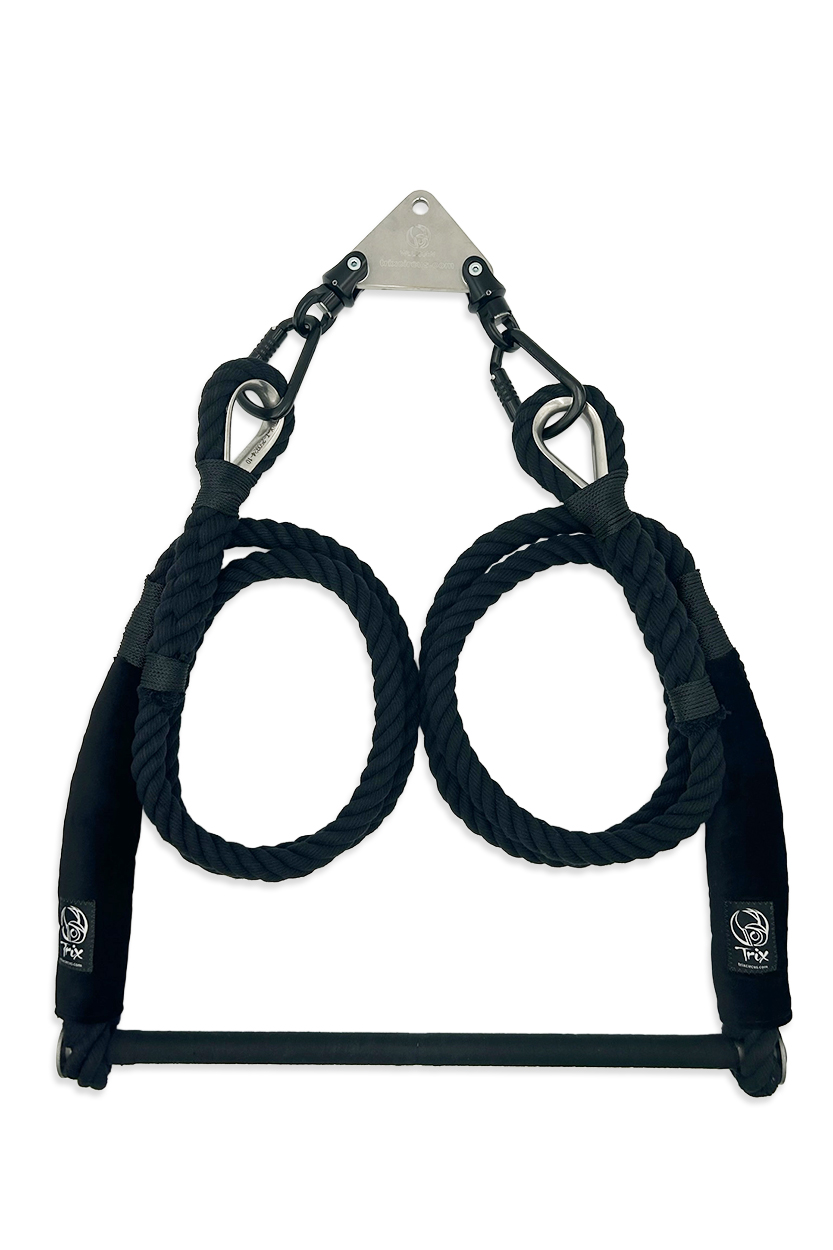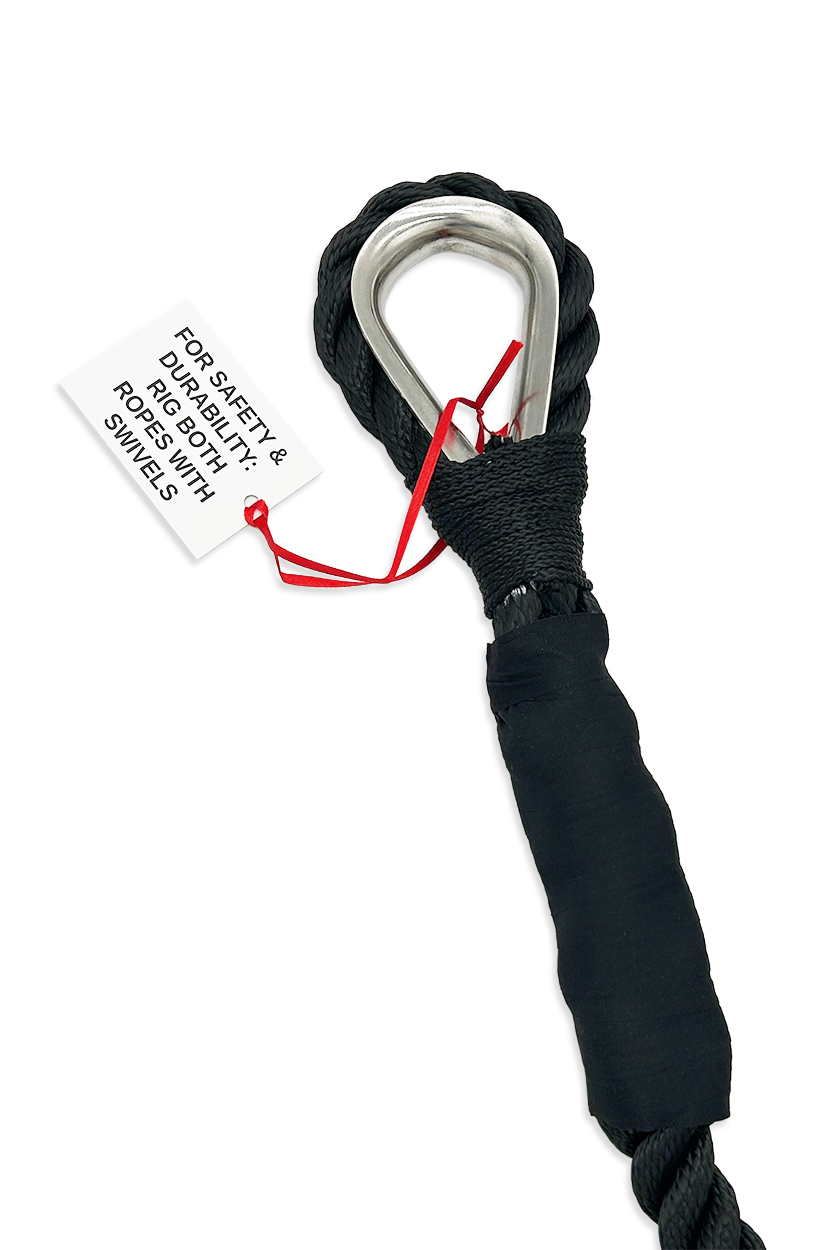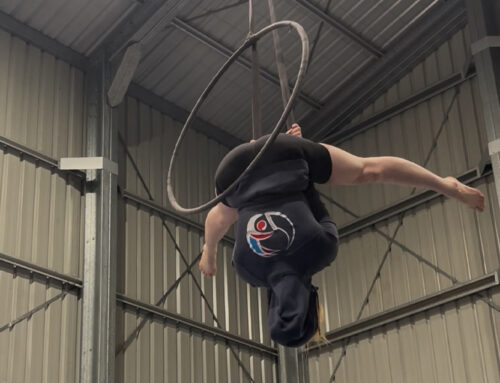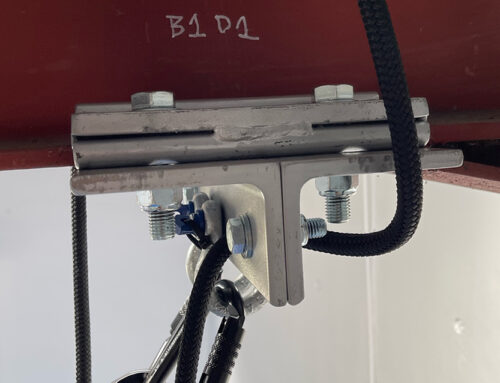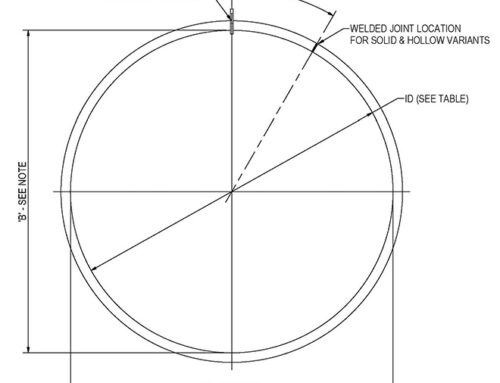When using your trapeze, particularly as a dance/single point trapeze, you may notice the following:
- that sometimes the trapeze ropes twist above you and will not separate even with your weight on the trapeze
- that the trapeze is no longer hanging as level as it used to hang
- that one rope appears distended/longer and thinner in the area above the padding
- that one rope appears bunched up in a spot (hockle) and/0r less stretchy
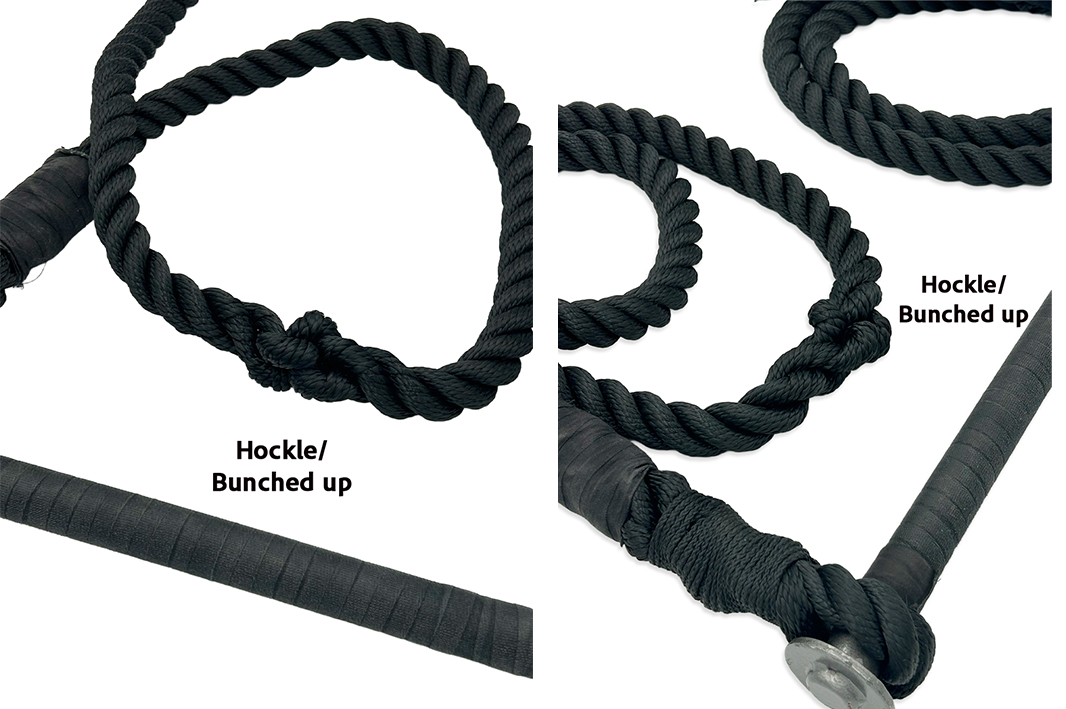
The reason for these complications lies in the manufacture of the ropes of your trapeze. Generally, your trapeze will have been made using a right hand overlay 3 or 4 strand rope. During use (especially when doing twisting/turning skills), one of the two ropes of the trapeze may end up rotating on itself and twisting up. This will make that rope a little shorter than the other rope. The other rope may also “bird cage” and untwist from its original lay. This untwisting and twisting, if left, will reduce the safety and strength of your apparatus. It could also potentially damage it and reduce its lifespan.
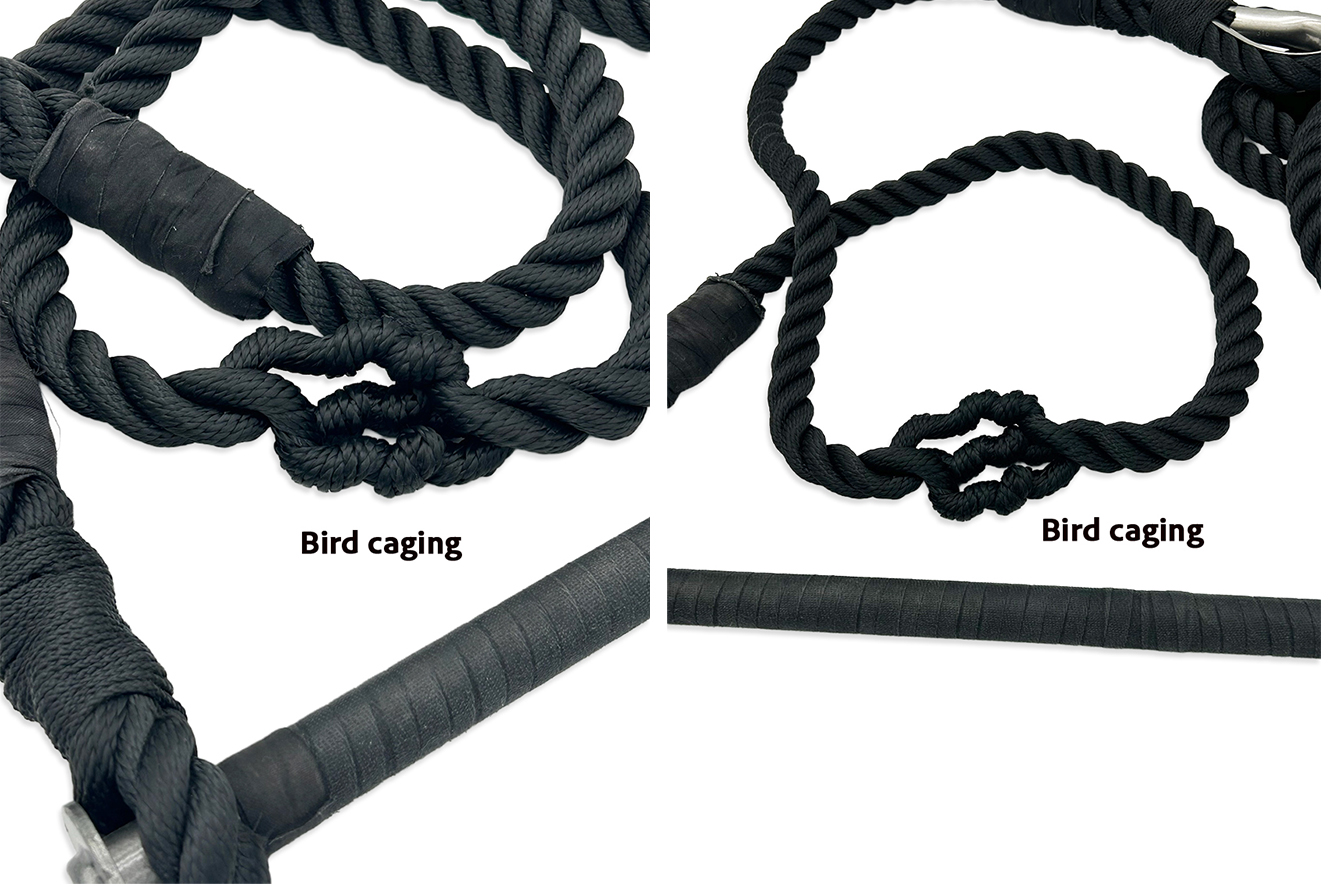
There are two solutions to this problem. Since we have mostly seen this problem in the single point configuration, our advice is directed to that scenario.
- The cheapest solution (but not the easiest) is to regularly remove the ropes from the rigging plate and manually work with them (twist/untwist/flick) to find the natural lay of the rope. Then to reconnect them back to the rigging plate. This needs to be done after every practice session or every class. Note: you cannot leave the rigging plate attached while untwisting the two ropes as this will untwist one rope, but increase twists on the other rope.
OR…
- The easiest solution (but more expensive) is to put a swivel onto each rope individually and reconnect those to the rigging plate. Using swivels means that you don’t have to untwist the ropes manually (as in solution 1) because the ropes will not twist up/untwist during use. The swivels will make your trapeze ropes last longer and remain level for longer. Attaching swivels to each rope is what we recommend.
We have been manufacturing and selling trapezes for almost 25 years and have only witnessed this problem relatively recently. With circus becoming more popular and aerial technique evolving, our advice often has to evolve too. Trapeze now incorporates more of the types of tricks that twist the ropes up on entry but don’t necessarily untwist them to exit the trick. As these tricks become increasingly prevalent, proactively resolving this issue will become more and more important. This is why our advice to trapeze artists/students/studios has adapted to recommend that swivels are used on each rope of the trapeze.
All-in-all, using swivels on your dance trapeze rigging plate will make your training and performing safer and keep your trapeze in tip top shape!
